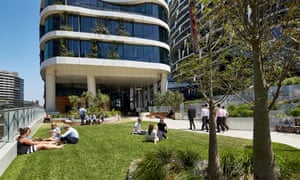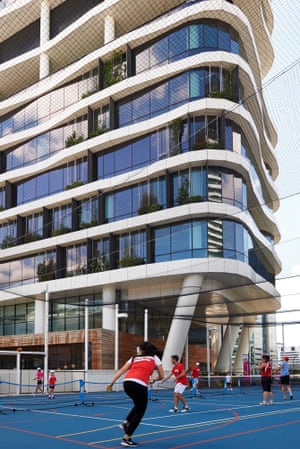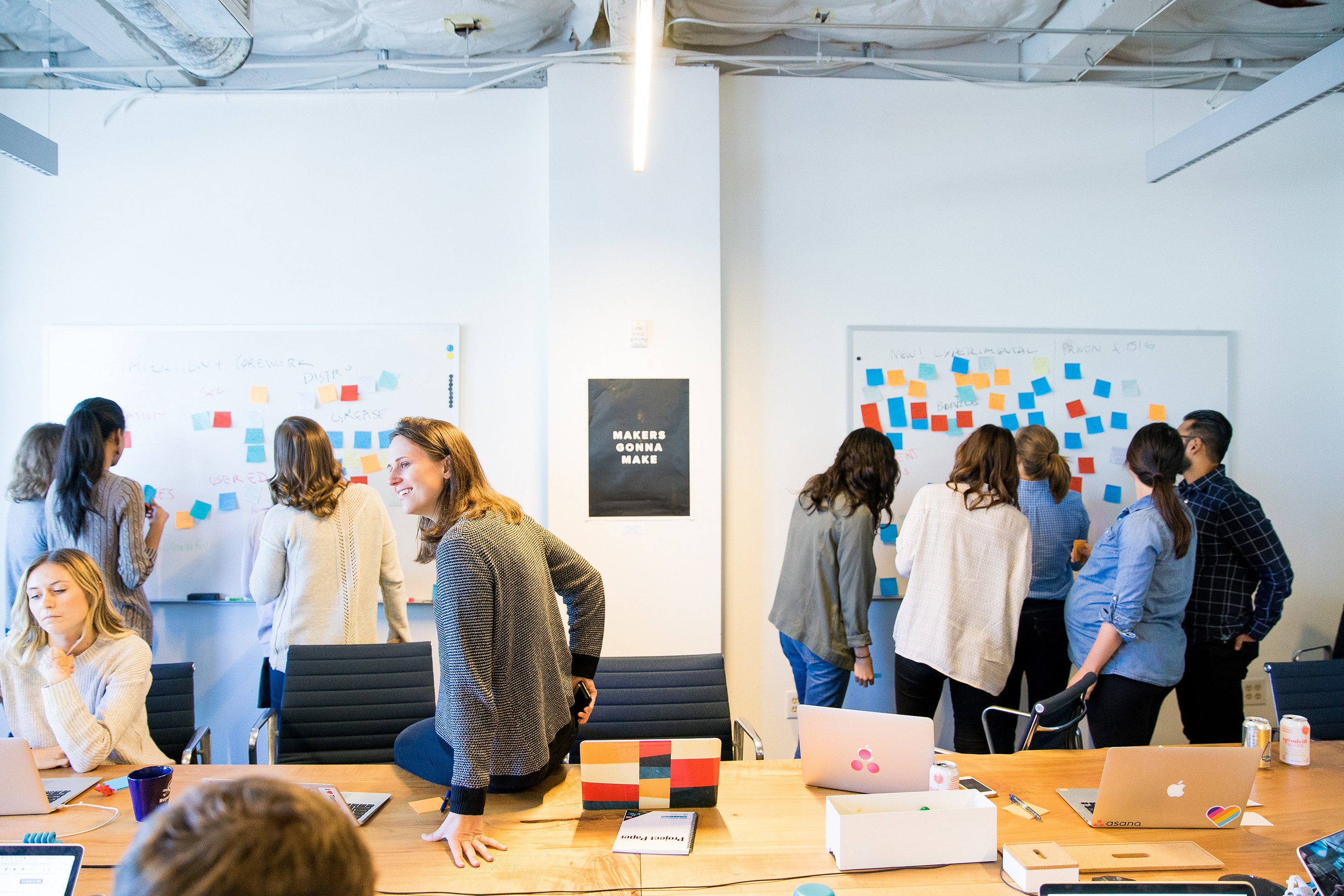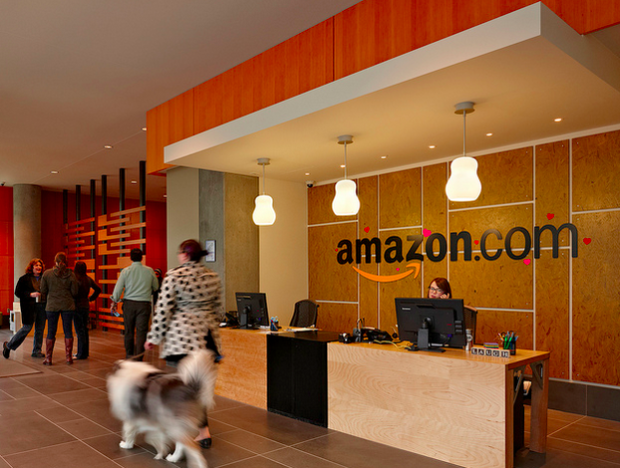The architects behind Medibank Place in Melbourne’s Docklands had numerous design aspirations but there was one key point. Australia’s largest health insurers wanted their new head office to be one of the world’s healthiest buildings.
“Medibank CEO George Savvides said to me, ‘I want a living, breathing, healthy building,’” says Rob Backhouse, managing director of Hassell Architects and one of the principal designers of Medibank Place. “In essence, our brief was to take Medibank’s core purpose and mission of promoting good health and express that physically in a building.”
Opened in 2014, Medibank Place has won numerous local and international awards, including for sustainability at the 2015 Interior Design Excellence Awards (IDEA).
It was also awarded six stars on the Green Star office rating from the Green Building Council of Australia, thanks to indoor features such as flooring, carpets, paints and furniture that are low in air-polluting volatile organic compounds (VOCs); external views and lots of fresh air.
These are vital for a healthy building, says Lindsay Bevege, managing director of management consultancy Business Outlook & Evaluation .
“I often say to people: ‘Do you really think that the quality of the indoor environment has no impact on the way in which people feel and therefore work?’ It’s an absurd proposition,” says Bevege. Indeed, a recent Harvard study has detailed the link between good quality indoor air and higher thinking.

It has long been established that workplace environments make a significant impact on employees’ health. Indoor air pollutants such as solvents from cleaning, mould spores or even ozone produced by photocopiers can contribute to sick building syndrome and poor health among workers, while noisy and over-crowded environments contribute to chronic stress.
Workplace design consultant Anetta Pizag remembers that when she began her career in 2001, the mainstream office was a sea of cubicles with cold institutional lighting and bland, uniform carpet tiles.
“It was more like an industrial revolution model of a building,” says Pizag, author of Create a Thriving Workplace. “Workplaces like that are not fun and they are not productive. They don’t make people happy and they don’t make people love their job.”
Yet evidence increasingly demonstrates that placing health and wellbeing at the centre of the design brief, such as with Medibank Place, has a positive impact on workers, the environment and the bottom line.
Building sustainability consultant Warren Overton says worker productivity gains of better buildings can dwarf energy bill savings.
“To provide perspective, my rough rule of thumb is that an average office might spend $30 per square metre per year on utilities and $300 per square metre on rent, but $3,000 per square metre on the salaries of people working there. Therefore anything that influences worker comfort and productivity is vitally important economically.”
The six star Green Star rated Trevor Pearcey House retrofit in Canberra for Australian Ethical Investments in 2007 resulted in annual energy savings of about $20,000, but the 6.2% improvement in perceived productivity was equivalent to $300,000 in salary costs.
Bevege has a wealth of similar examples. His study of the 500 Collins Street office block upgrade by Bovis Lend Lease in Melbourne reported a 40% fall in sick leave, 11% gain in typing speeds and 10% to 20% reductions in headaches, colds and flu, fatigue and concentration difficulty.
CGU Insurance’s move to 181 William Street in Melbourne resulted in an 18% decline in occupational health and safety incidents, which is often used as a surrogate measure for concentration. And Sustainability Victoria’s move to 50 Lonsdale Street in Melbourne led to sick leave falling by nearly a third and improved staff concentration in meetings.
The 500 Collins Street upgrade meant a significant increase in rent for a stockbroking company tenant, but it was worth it. “We asked the stockbroker would you ever go back to where you were, and the answer was ‘under no circumstances’. They actually said their productivity had gone through the roof,” says Bevege.

Another key health factor for Medibank Place is its emphasis on activity-based working. This increasingly popular workplace approach encourages office workers to get up and move around. Aimed at increasing collaboration, this has the by-product of increasing physical activity.
Employees at Medibank Place can move between different types of workspaces, from open and collaborative spaces to private, quiet spaces. There are adjustable sit-to-stand workstations, a bike ramp from the main entrance to bike storage, access to sporting courts and even the opportunity to dig around in the building’s Stephanie Alexander kitchen garden.
“We know the average Australian adult now sits nine hours a day. And the workplace is a dominant source of that sitting,” says Professor David Dunstan who leads the Physical Activity Laboratory at Baker IDI Heart & Diabetes Institute. And it’s cause for concern, as sedentary behaviour increases the risk of diabetes, obesity, heart disease, stroke and cancer.
So what lies ahead for better buildings? Dominique Hes, a building sustainability researcher at the University of Melbourne, says the WELL Building Standard, a system for measuring building features that influence health and wellbeing, will play an increasingly important role.
“I know Green Star is taking health on board, but the WELL standard speaks specifically to staff and productivity issues, so it’s very attractive,” Hes says.
Asked whether companies might promote such intiatives as a means of keeping employees in the office longer, Pizag says that ultimately depends on the individuals and the organisation involved.
“For companies that have younger employees, they prefer to talk about work-life integration as opposed to work-life balance. For example, Google’s intention is to keep their people there as much as they can, and that’s why they offer free healthy meals,” she says.
Bevege agrees: “We made the observation in all of our studies that when an employer shows that they are concerned about the environment and they are concerned about the health and wellbeing of their employees, they get a loyalty and productivity dividend as well.”
Pizag finds the boom in people-centred workplaces encouraging. “The future of the workplace will have a much stronger focus on looking after people’s mental health and resources: their emotions, minimising stress, improving focus and making people feel more fulfilled in their work.”
From: The Guardian



